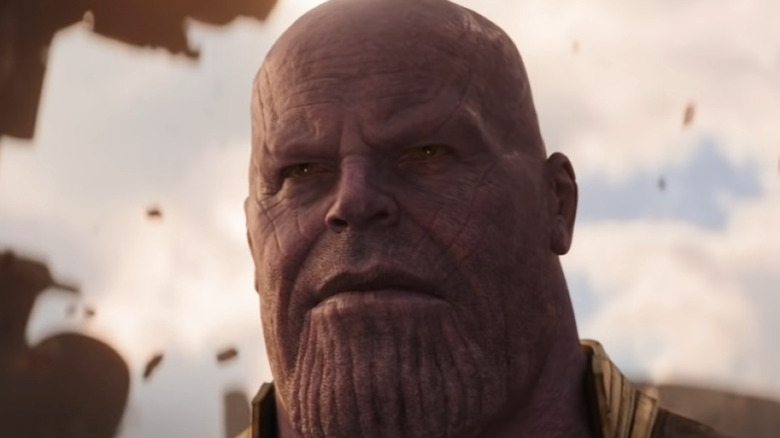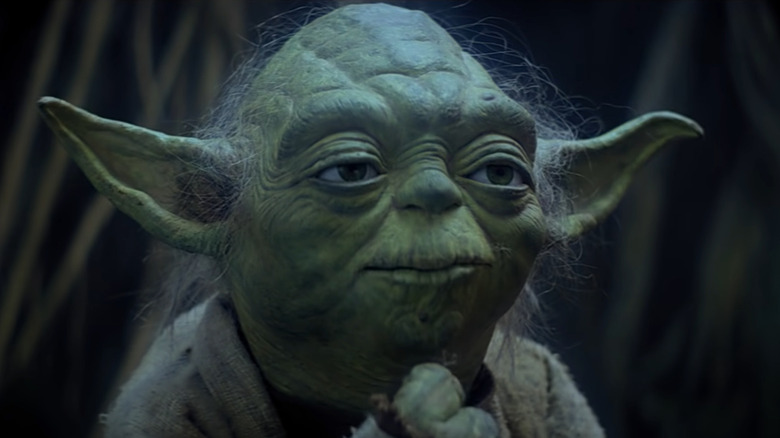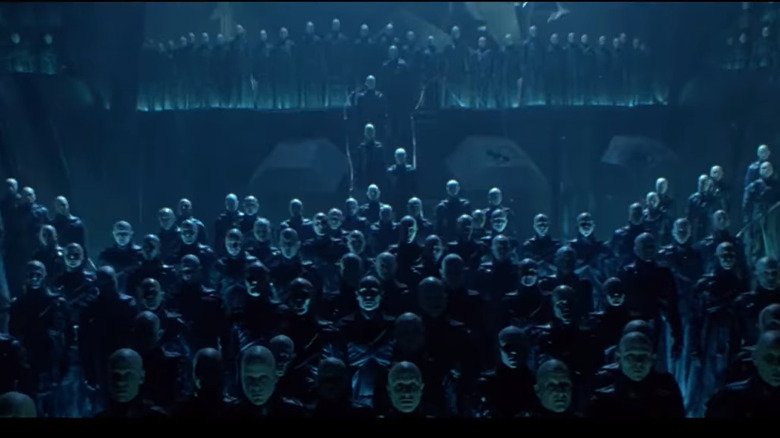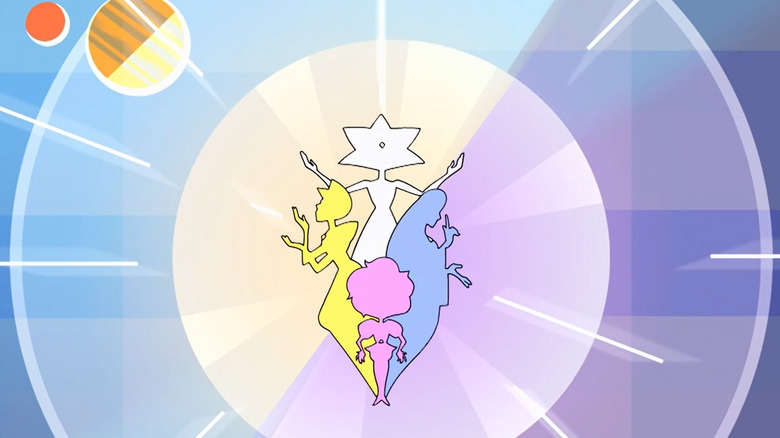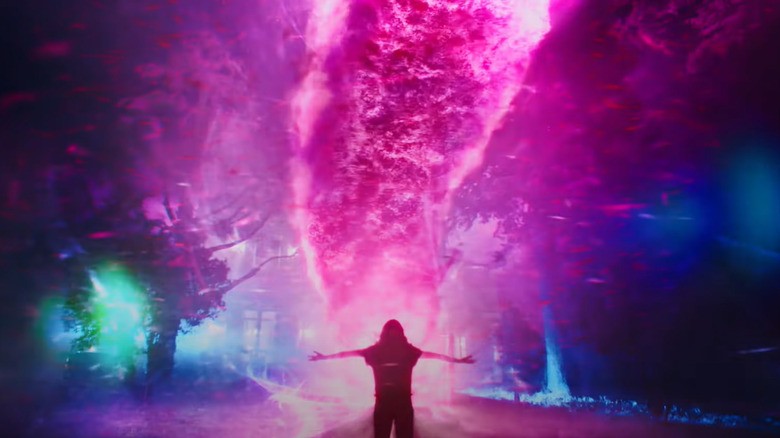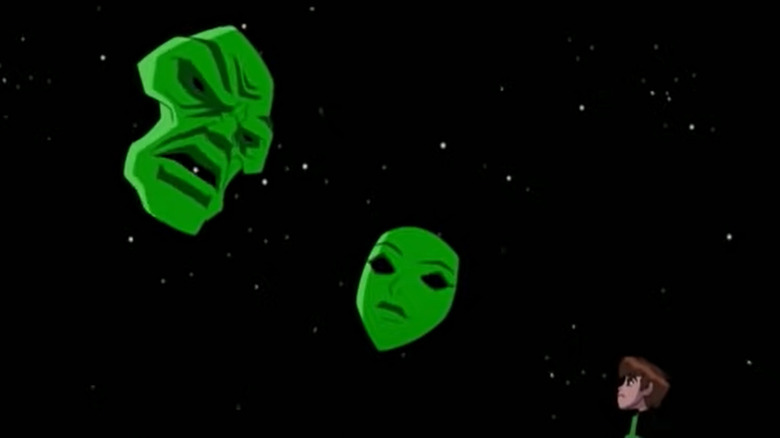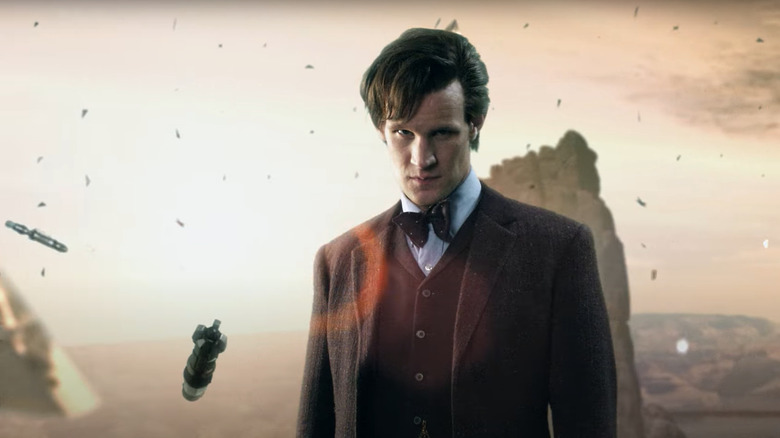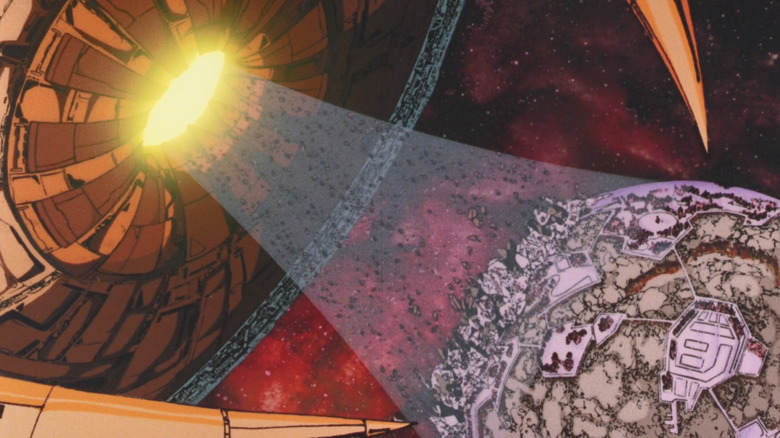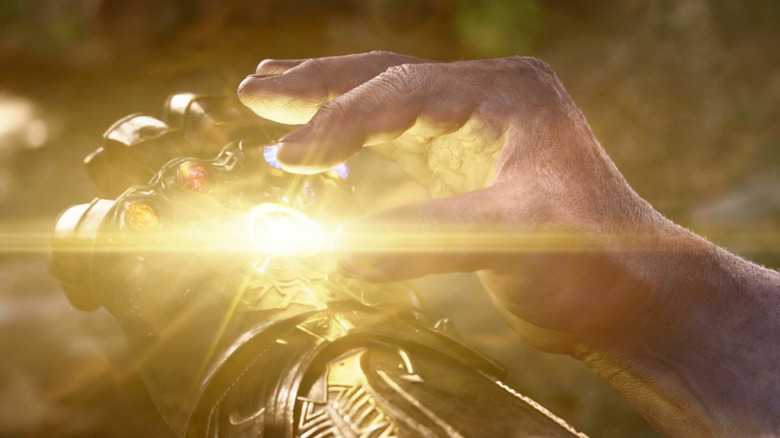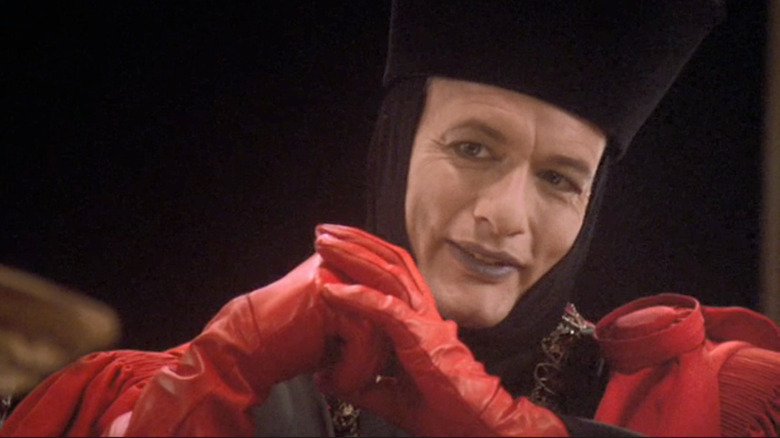The Most Powerful Aliens In Sci-Fi Movies And TV
Aliens are one of the best things about the science fiction genre, particularly when it comes to movies and television. Encountering otherworldly species with abilities vastly beyond our own is an idea that has captured the human imagination for centuries, and filmed media ups the ante by presenting that idea on screen.
From the original creations of pioneering sci-fi shows like "Lost in Space" and "Star Trek" to the modern computer-generated marvels that grace today's cinema, everybody wants to look at aliens. As the number of fictional aliens has multiplied and their abilities have gotten correspondingly stranger, there's one question that sci-fi fans (being fans) love to debate: Which aliens are the most powerful?
Of course, "powerful," by itself, is a poorly-defined term. What attributes, after all, constitute power? There are as many different answers to that question as there are stars in the universe, but for this list, we're going to focus on aliens whose abilities extend far beyond those of humanity, aliens who can terraform planets, manipulate time and space, and generally reshape reality.
It's less about who would win in a fight — which is why, for example, you won't find Superman here — and more about who can do things that make the idea of fighting irrelevant. We'll also be mainly dealing with alien species rather than individuals, though there are some notable exceptions. And now, terms defined, it's time to gaze in awe at the most powerful fictional (we hope) aliens in movies and TV.
Yoda is a master of the most powerful force in the galaxy
It's tempting to exclude the Jedi from a list like this, considering they are primarily seen using their powers in direct combat. But their connection with the Force, the mystic energy field that "binds the galaxy together," makes them impossible to overlook.
Few, if any, Force users are more powerful than Yoda, the deceptively diminutive Jedi Master who has been stealing the hearts of "Star Wars" fans since 1980's "The Empire Strikes Back." His considerable telekinetic abilities allow him to rearrange the physical world around him, but what really makes him stand out is the higher level of consciousness the Force grants him, allowing him to communicate across vast distances, peer into the minds and souls of others, and occasionally predict the future. His power persisted even in death, as seen when his Force ghost caused a lightning strike in "The Last Jedi."
All that being true, Yoda alone still isn't at the level of a lot of these other aliens. What's interesting, though, is that he's a member of a species whose name and true nature remain mysterious to this day. All we really know about them is that every member of this species we've seen is powerful in the Force, and the most recent representative, "The Mandalorian's" Grogu, is powerful in the Force even as a small child. If more information about Yoda's species was revealed, how strong would they turn out to be?
The Strangers from "Dark City" craft worlds on a whim
Alex Proyas' 1998 film "Dark City" is far less well-known than "Star Wars," but its villains, the Strangers, could take the Jedi apart.
These pale, bald, vampiric creatures possess similar powers of telekinesis, but wield it effortlessly, altering the physical world at a molecular level with a mere thought. In "Dark City," this power is called Tuning — a name that implies reality is slightly imperfect and can be delicately corrected — and while individual Strangers can do it, the process is at its most effective when they are working together in a single vision. Considering that the Strangers are a hive mind species, this isn't difficult to achieve, and they use it, along with their incredibly advanced technology, to regularly rearrange the city on the vast space station they constructed, all while using alien science to manipulate the memories of the humans trapped inside.
Of course, the Strangers do have weaknesses — they're as physically vulnerable as any human, and the entire point of their experiments in the movie is to find a cure for the strange ailment causing their species to dwindle and die. But a species that can essentially create and manage an entire world under their complete control while using mind games to stay in the shadows and keep the population in the dark (both figuratively and literally) is a species you don't want to mess with.
The Gems from "Steven Universe" are sci-fi's most powerful empire
Alien empires are a big deal in science fiction, and there are several that could claim to be the greatest. But for our money, that title goes to the Gem Empire from "Steven Universe," a vast, incomprehensibly advanced society composed of sentient alien gemstones with extraordinary powers.
Going about their lives in outwardly-projected bodies composed of pure light, they are solar-powered, ageless, immortal, and immune to disease. They can shapeshift, use their gems to access pocket dimensions, and fuse with one another to create different, larger Gems. That last part is particularly important given that different Gems have additional powers unique to them alone, including the Lapis' terraforming abilities (used by the Empire to sweep over new planets) and the power of Sapphires to see the future. Fusions combine these individual powers in new, unforeseen ways.
The Gem Empire has been spreading across the universe, draining planets of organic life and repurposing them for use by inorganic life, remaking entire solar systems into incubators for future Gem generations before moving on to the next one, since long before the dawn of humanity. The brutal efficiency of its rigid caste system made it the ultimate intergalactic colonizer until Steven Universe managed to change things — and Steven is himself the most powerful Gem of all. Now that the resources of their former empire are being used in pursuit of peace and harmony, the Gems are arguably more powerful than ever.
The color out of space is unfathomable and terrifying
The Gem Empire contains a multitude of colors, but some colonizers are made up of just one.
The alien entity that haunts Richard Stanley's 2019 film "Color Out Of Space" — one of the best adaptations of an H.P. Lovecraft story in cinematic history — is formless and untraceable, infecting the minds and bodies of the helpless Gardner family as it infects everything else in its immediate vicinity. It is literally a malevolent alien color, its influence portrayed in the film by a vivid, malicious magenta.
The color can exert direct control over its physical environment, including fusing people together (in a much less wholesome manner than Gem fusion), can cause hallucinations and insanity, and transcends both time and space. By the end of the film, its power has built into a massive storm, the color sweeping over the land and blasting across the sky. Having assimilated all life in the area, the color returns (presumably) to its home planet, a horrifying non-Euclidean nightmare world which hydrologist Ward Phillips (played by Elliot Knight) briefly glimpses in his mind.
Like most Lovecraft stories, "Color Out Of Space" ends ambiguously with the madness having briefly abated, though Ward, the incident's sole survivor, seems to think it isn't over, and the final shot includes an ominous pink-tinged sky and a small magenta insect. The color will, inevitably, consume the entire Earth, as it has consumed countless other worlds, and there is simply no stopping it.
The Incubators from "Madoka Magica" have an ambitious agenda
The 2011 anime series "Madoka Magica" begins innocently enough. Two middle school girls, Madoka and Sayaka, are approached by an adorable creature named Kyubey, who offers them a single wish in exchange for their subsequent transformation into magical warriors bound to do battle with evil witches. As the show goes on, it gradually becomes clear that things aren't what they seem — what the girls are actually giving up are their souls, and they are doomed to eventually become witches.
As "Madoka Magica" draws to its conclusion, we learn that Kyubey is a member of an alien race called the Incubators, who have spent centuries trapping girls of a certain age in this self-destructive cycle for a specific purpose: Using the energy produced by their emotions to fight against entropy itself and ultimately prevent the heat death of the universe. How's that for reshaping reality?
As its title implies, "Madoka Magica" is as much fantasy as it is science fiction, but the Incubators are definitely aliens, and beyond the absurdly ambitious battle they're fighting, they can, you know, grant wishes. If the universe-altering wish made by Madoka in the series finale is made possible by the power of the Incubators, it's difficult to imagine something they can't do. Except, perhaps, come up with a less complicated plan for harvesting the emotions of pre-teens.
The Celestialsapiens from "Ben 10" can do anything, but usually do nothing
When you start getting into omnipotent aliens, the rules of science fiction tend to get vague, with specific possibilities clouded in a cascade of narrative hand-waving.
Not so with "Ben 10," the Cartoon Network series that has been running for over 15 years (assuming you count the parallel universe reboot in 2016). The series' Celestialsapiens are a race of entirely omnipotent aliens with unlimited control over space, time, and reality. There is, canonically, nothing they can't do. So, when the show's protagonist, Ben Tennyson, acquires some of their DNA for his Omnitrix wristwatch, allowing him to turn into a Celestialsapien named Alien X, you might think the show would just end right then and there.
However, the Celestialsapiens have a single, crippling weakness: They have two personalities, and in order to do anything — even just to move — both personalities must agree to do it. Considering the personalities are almost always opposed to one another, this usually never happens.
So, they spend their lives locked in internal debate with one another, and occasionally with other Celestialsapiens, and as a result, their reality-bending powers are rarely used. Even when Ben himself takes the form of Alien X, adding his own personality to the mix, all three personalities still have to agree on any action taken, allowing the series to continue without the omnipotence of the Celestialsapiens completely breaking the plot.
The Time Lords from "Doctor Who" are exactly that
While many of these aliens are famous for warping the physical realm, the Time Lords of Gallifrey are the undisputed masters of the temporal.
An unbelievably ancient civilization, they invented time travel and have since existed unmoored from linear time, able to see the past, present, and future simultaneously. While various temporal disasters caused them to implement policies of non-interference in history, they have taken an active hand in several major events, and they can see and manipulate the underpinning structures of the universe thanks to their advanced technology. Moreover, they are telepathic, immortal, and functionally impossible to kill due to their ability to regenerate — though that didn't stop them from engaging in bloody warfare against a similarly powerful species in the form of the Daleks, and ultimately being destroyed by one of their own.
If any one Time Lord can be considered more powerful than the others, it is indisputably the Doctor, the central protagonist of "Doctor Who." Having graced the small screen since 1963, the Doctor has had more adventures and encountered more apparently unsolvable problems than any one character in the history of science fiction, and they always manage to come out on top, usually saving countless lives in the process — though their enemies know them by names like "the Oncoming Storm."
Bouncing around time with superior technology, a human companion, and an indomitable will, the Doctor's true power comes from the fact that they never give up.
Unicron is a robot chaos god
You might not know it from the Michael Bay movies, which only marginally allude to him in "The Last Knight," but the being known as Unicron is the ultimate big bad of the "Transformers" franchise.
Originally appearing in the 1986 film "Transformers: The Movie" — and voiced by no less than Orson Welles, in the cinema legend's final performance — Unicron is, in keeping with the tone of the series, a giant robot. But while the Autobots and the Decepticons are big enough to turn into trucks and planes, Unicron dwarfs them all and transforms instead into a fiendish and ravenous robot planet, which travels around the universe searching for worlds to consume. While he is destroyed by the end of the movie, his story is by no means over – he's once again the featured villain in the trio of early-2000s shows "Armada," "Energon," and "Cybertron," which have been collectively referred to as "the Unicron trilogy."
Over the years, Unicron has proven to be quite the villain. As his origins have been expanded, he has transformed (narratively) from an enigmatic force of destruction to one of the universe's primal beings, a singular entity in the multiverse that represents chaos and hatred. His eternal war with his brother and opposite, Primus, gave birth to the Autobots and Decepticons, with Unicron feeding off their war. He has spent the entirety of time itself plotting to destroy all creation, and his defeat only leads to the creation of a universe-threatening black hole.
When Thanos has the Infinity Stones, few are more powerful
All the aliens we've mentioned so far are powerful, sure ... but can they destroy half of all life in the universe with a single snap? That's what Thanos does at the end of "Avengers: Infinity War," an event that sent a shockwave through both the fictional world of the Marvel Cinematic Universe and the real world watching in theaters. Heck, three years after the movie came out, shows like "WandaVision" and "The Falcon and the Winter Soldier" are still depicting the effects on mankind from that moment known as the Snap.
It should be remembered that Thanos having power on this scale is conditional — it's only after completing his quest for the six Infinity Stones that he becomes a true standout in the alien ranks. With each stone Thanos collects, he becomes deadlier, gaining the ability to travel instantaneously, rewrite the fabric of reality, and turn back time. Upon acquiring all six, he becomes, in his own words, inevitable, committing genocide on an unthinkable scale with the snap of his fingers.
Even on his own, however, the Mad Titan is still a formidable opponent. The fact that Thanos was capable of wielding all six stones in the first place is remarkable — these are artifacts that destroy pretty much anyone who touches them and nearly killed the Hulk when he duplicated Thanos' feat in "Avengers: Endgame." But the thing that truly makes Thanos dangerous is his twisted conviction and sheer relentlessness in pursuit of his megalomaniacal goals.
Does he always have the power to cut down the total number of living things by 50%? No. But who else would even try — let alone succeed?
The Q are the most powerful aliens in science fiction
Re-making the universe with a snap of your fingers is great. You know what else is great? Not having to go on a scavenger hunt for magic space rocks to do it, because you can just snap the fingers you were born with at any point and do anything.
Of all the aliens in science fiction, nothing compares to the Q — an entire race of ancient, immortal, omnipotent, omniscient super-beings that can do whatever they want, all the time. In fact, it's impossible to comprehend how far beyond the other species of "Star Trek" the Q are — they exist on an entirely different level of reality and can, for example, change the gravitational constant of the universe, or travel outside it entirely. Start a conversation with a Q and you'll find they know everything about you, no matter how personal. Offend one, and you might suddenly find that your species has never existed.
In "Star Trek," the Q are represented almost entirely by John de Lancie's iconic character, also named Q. His condescending and frequently infuriating relationships with various Starfleet luminaries are indicative of the only reason his species ever interacts with anyone: The Q get bored.
None of the various "Trek" captains have managed to defeat him, of course — after all, there's no defeating the all-powerful. The best you can do when you're up against a Q is to try to talk your way out — and hope it finds you interesting enough to play with.
